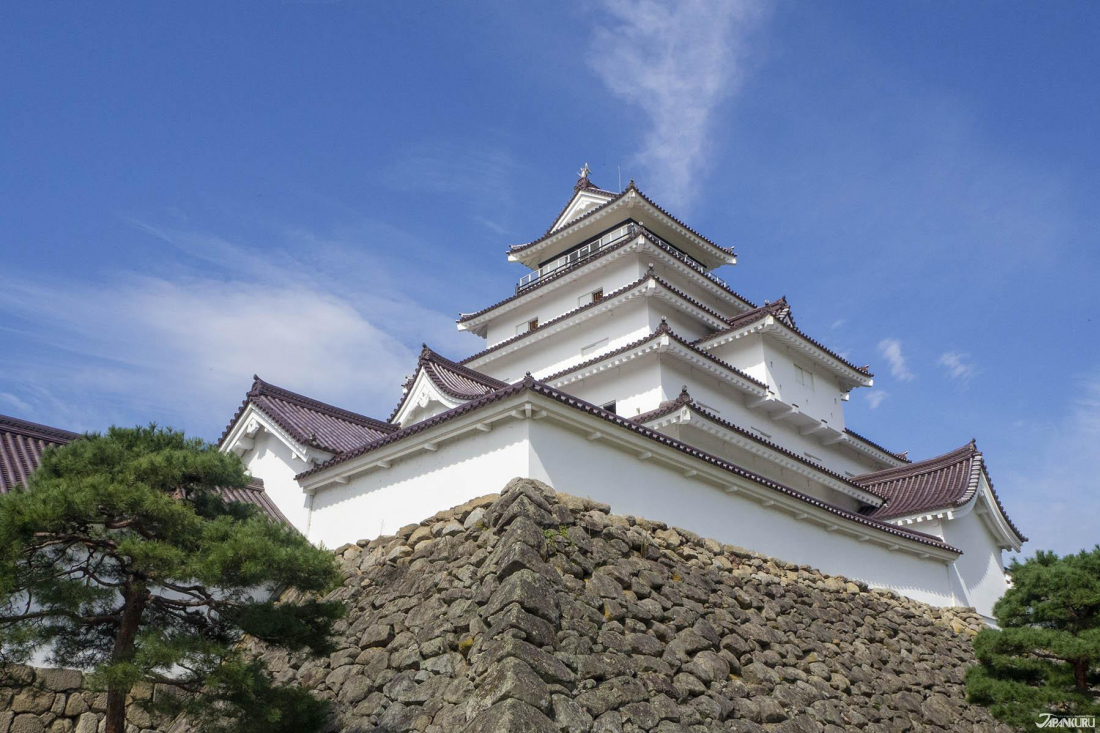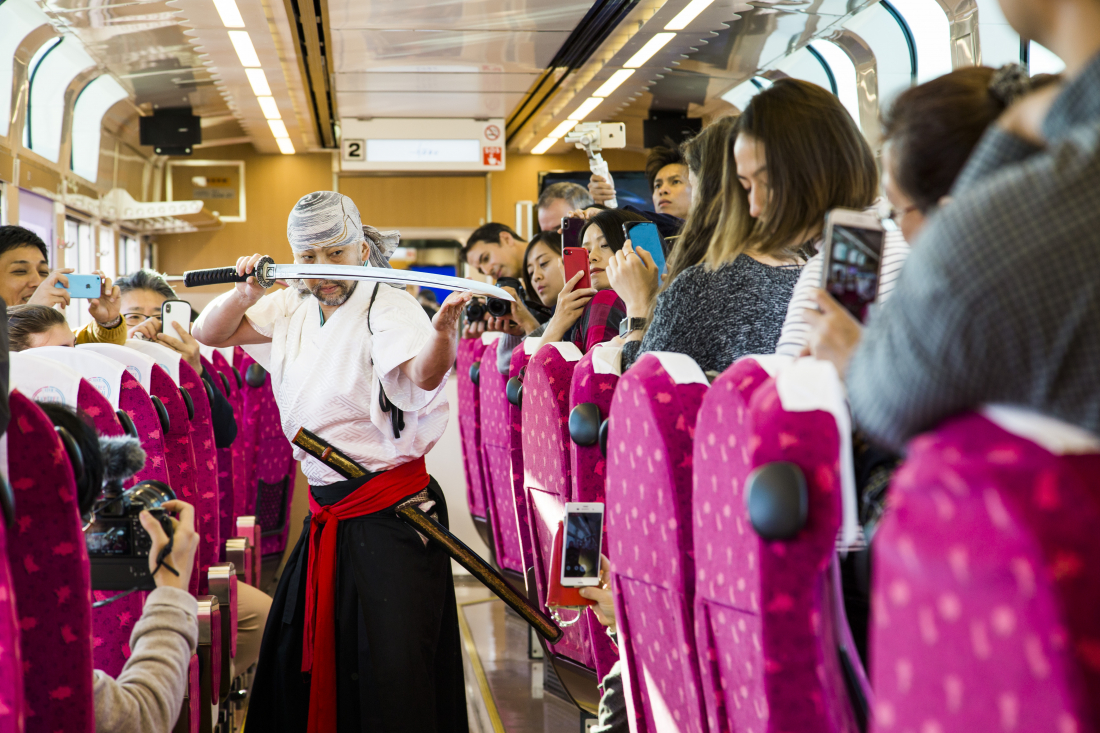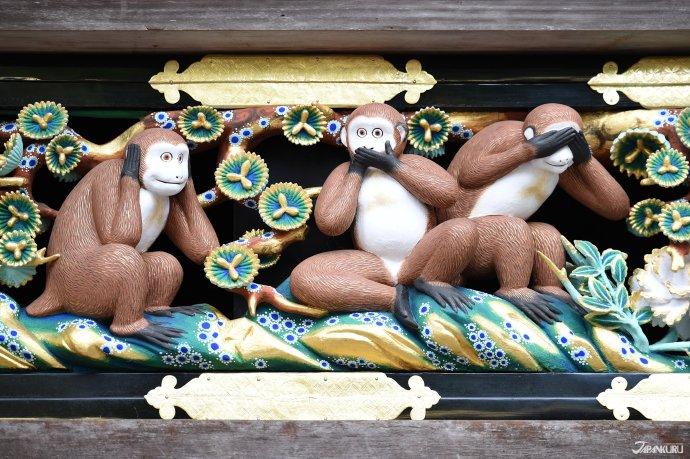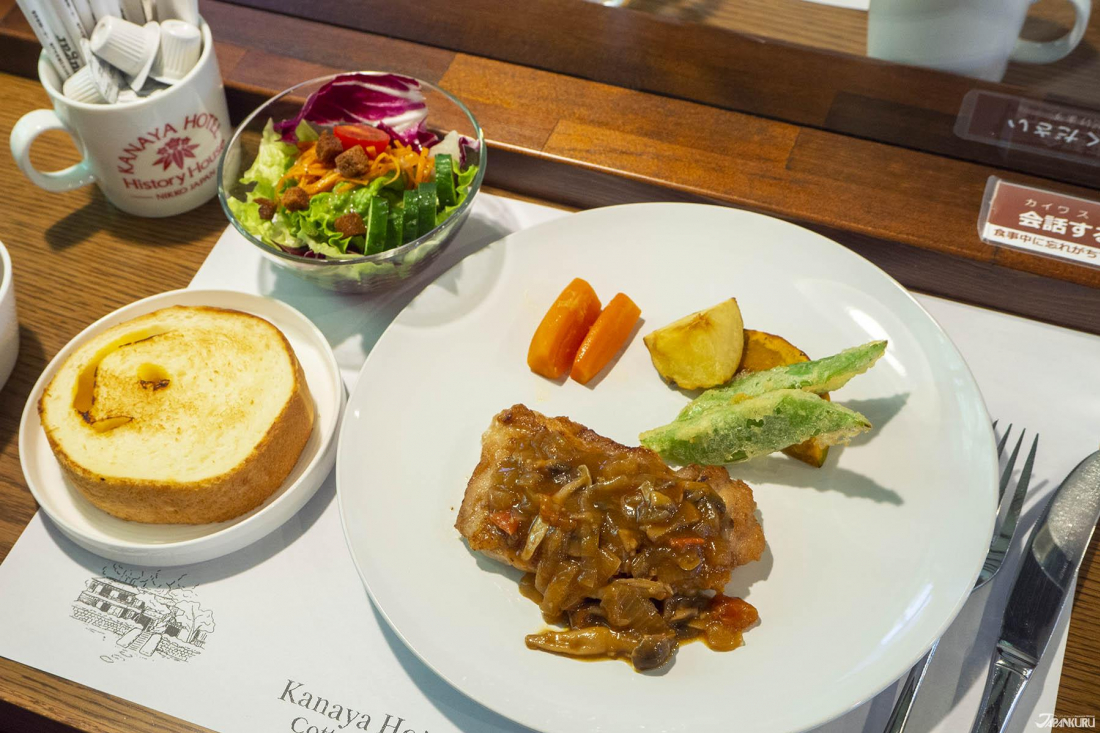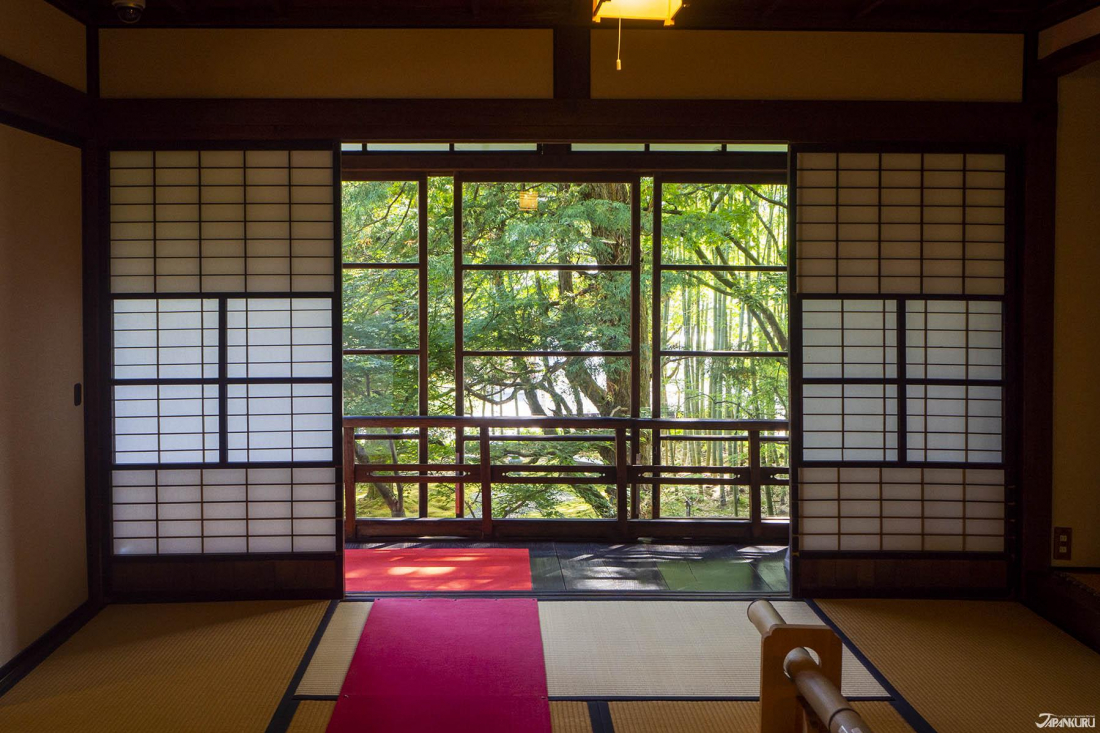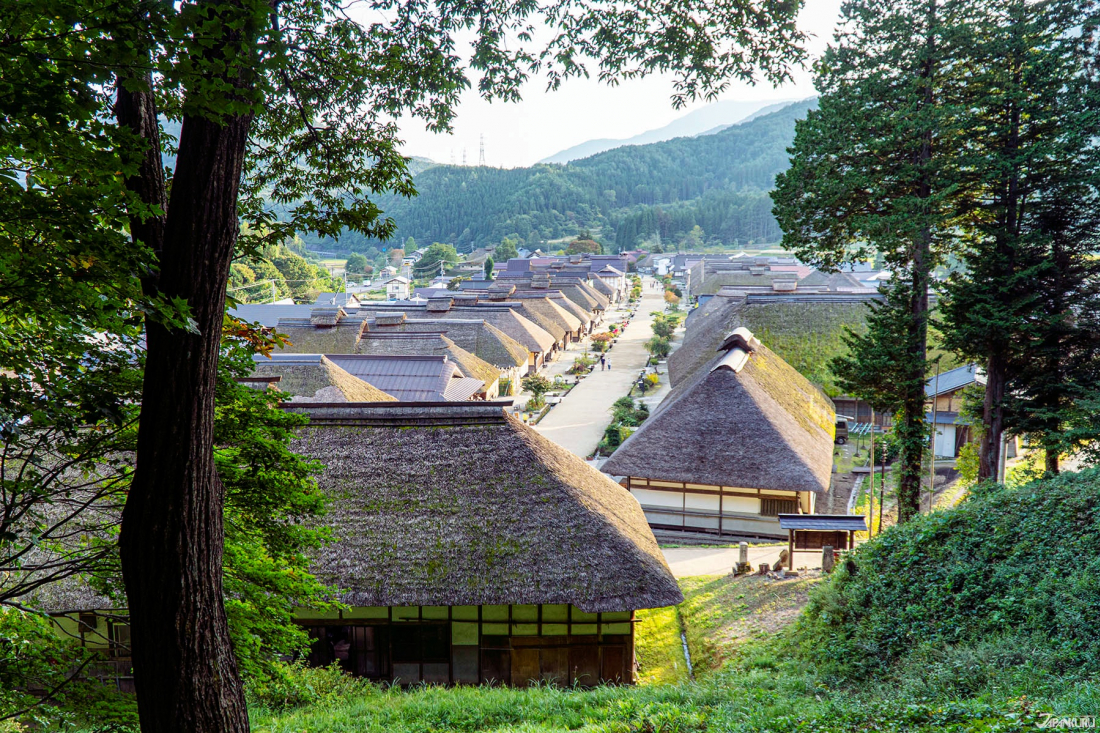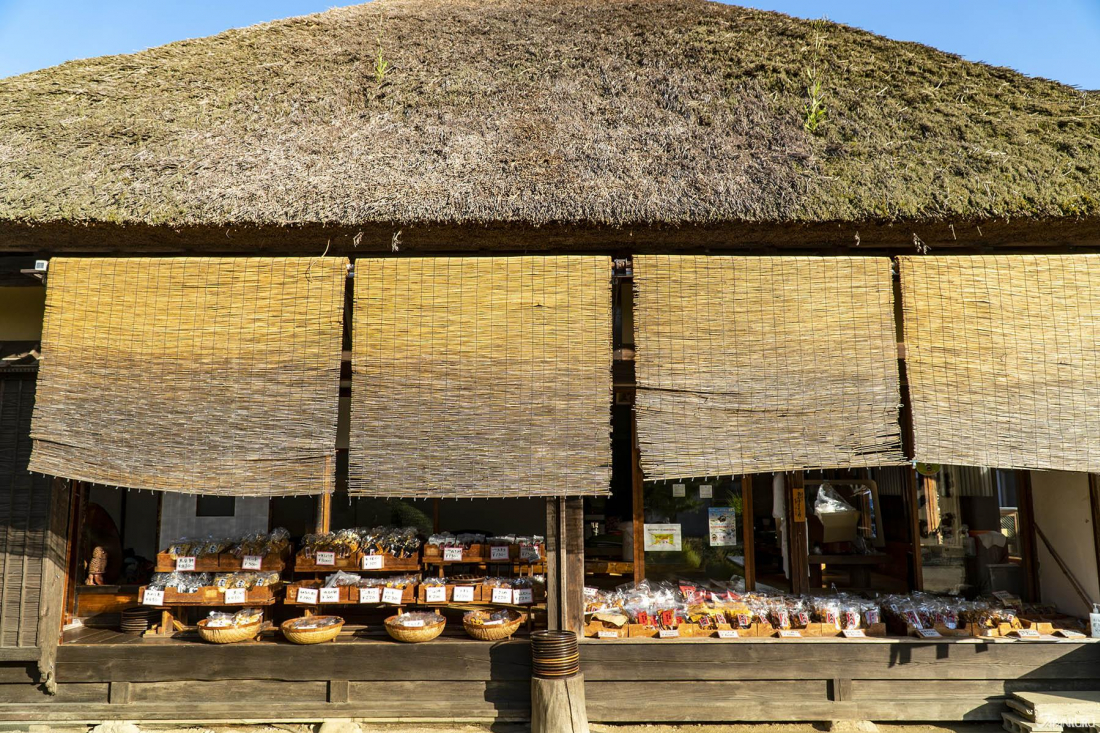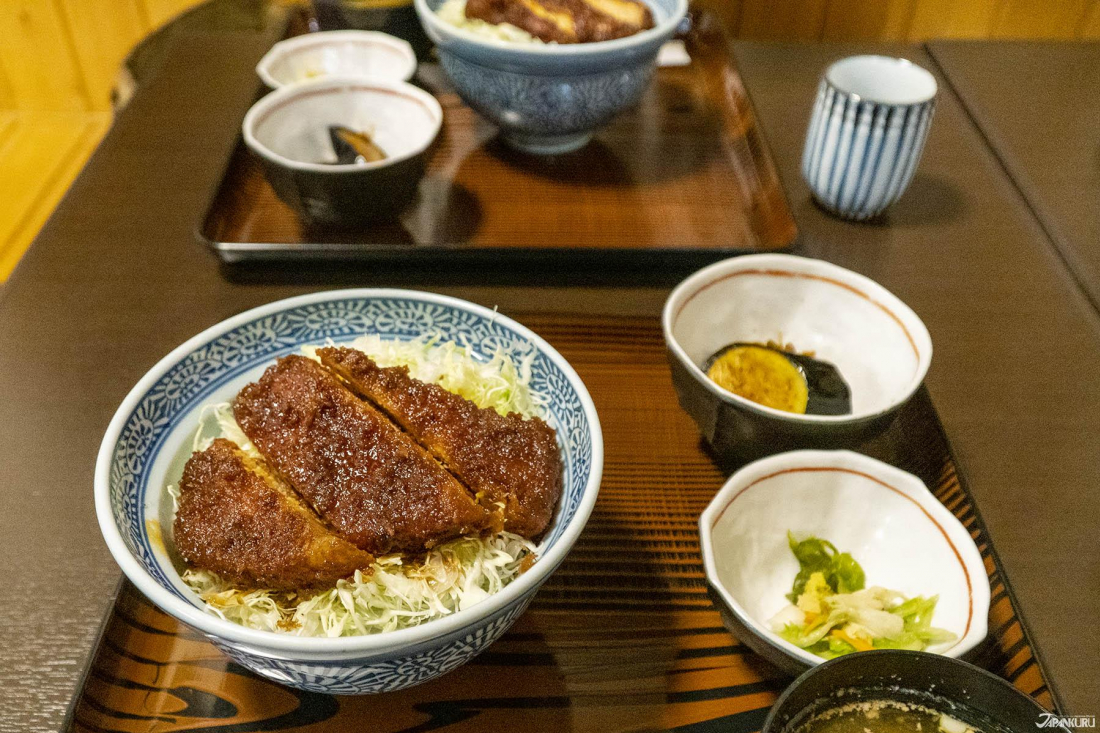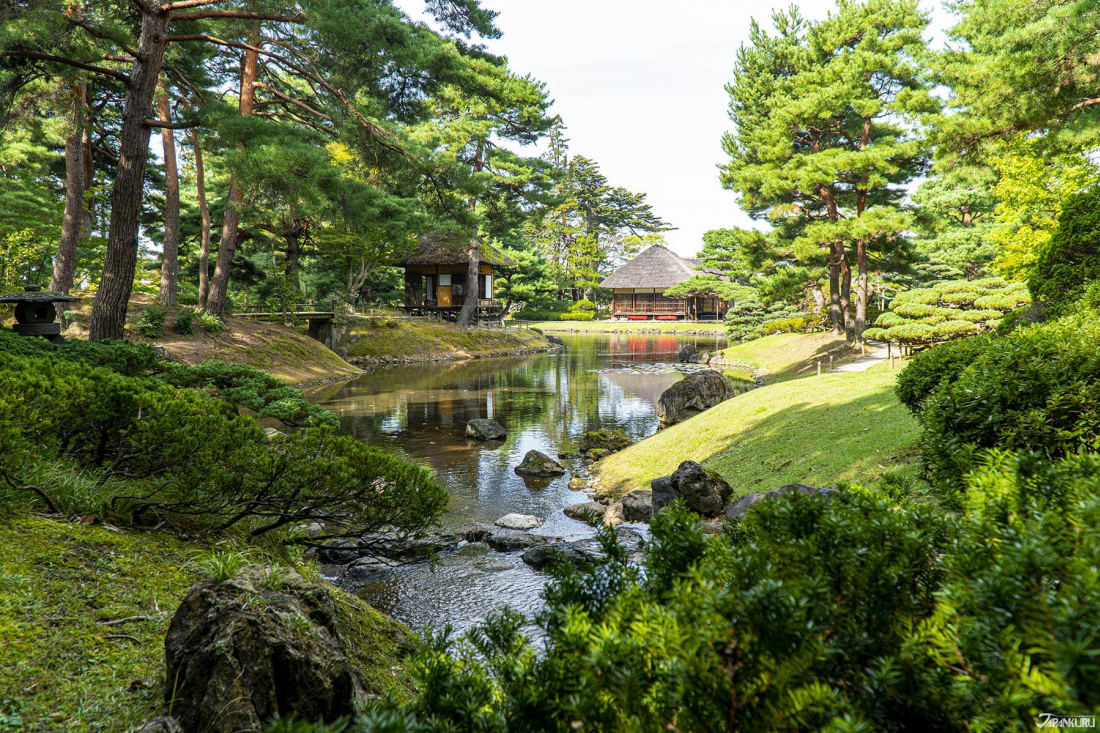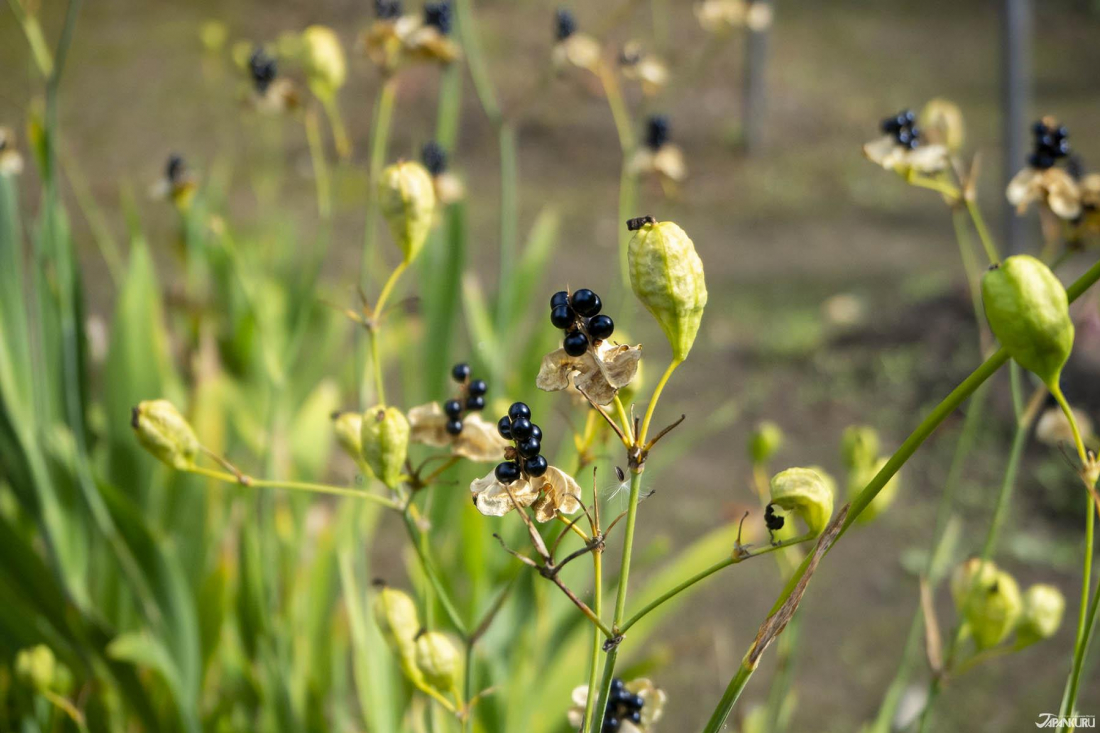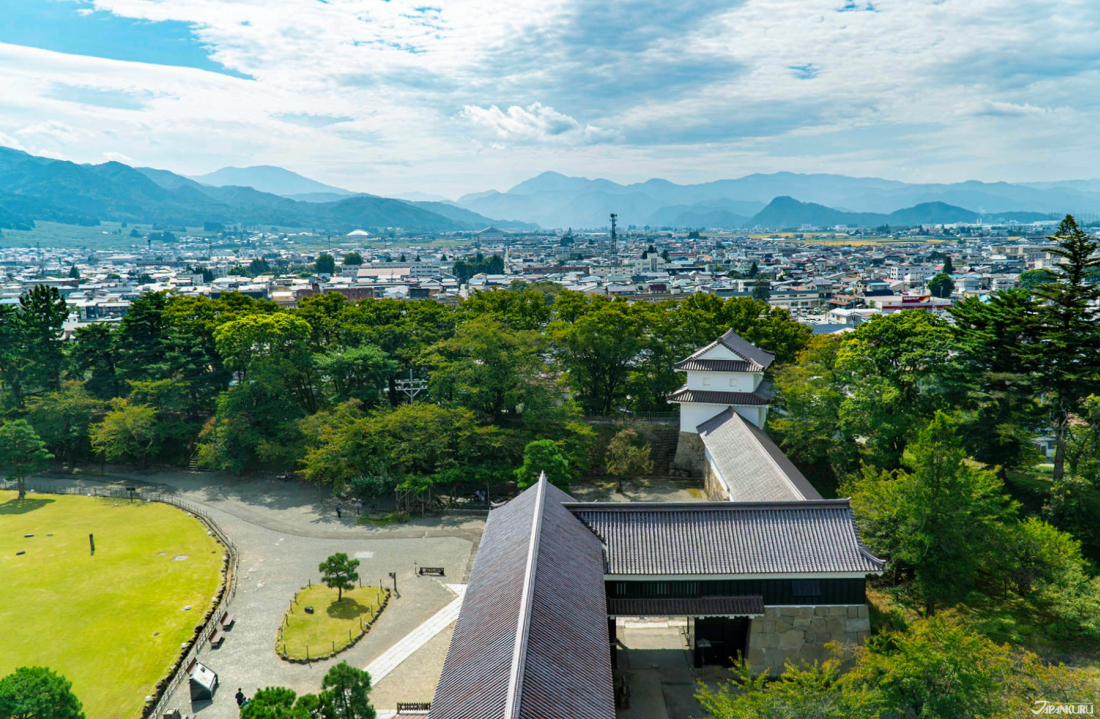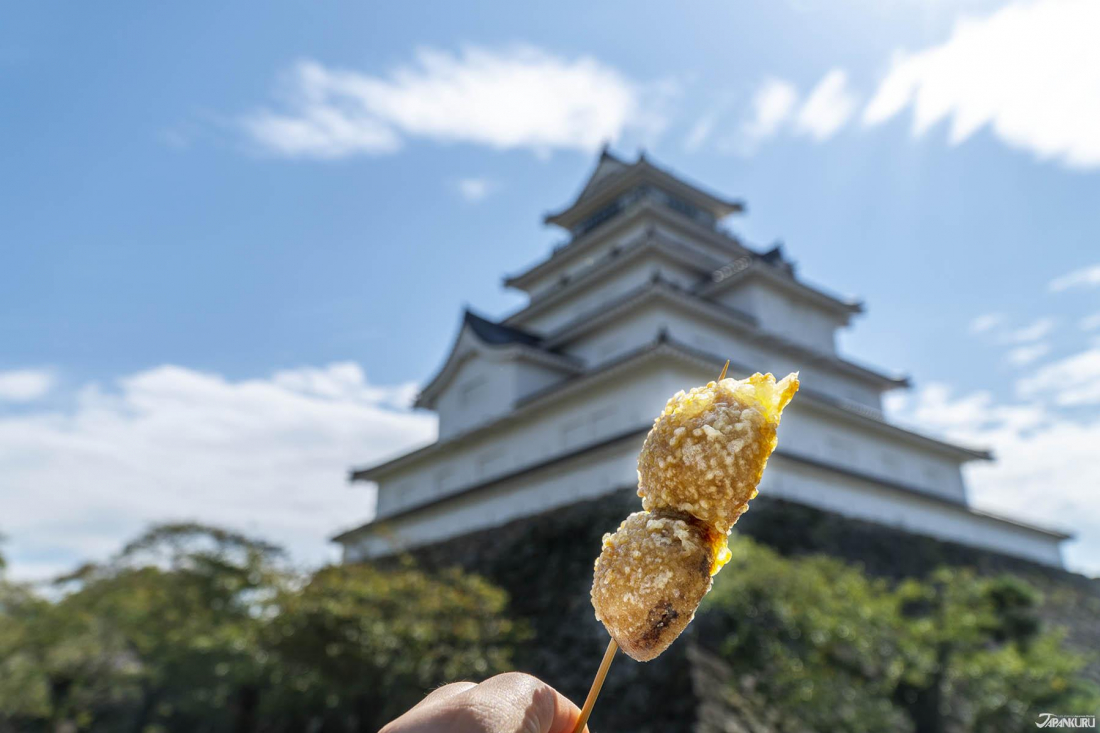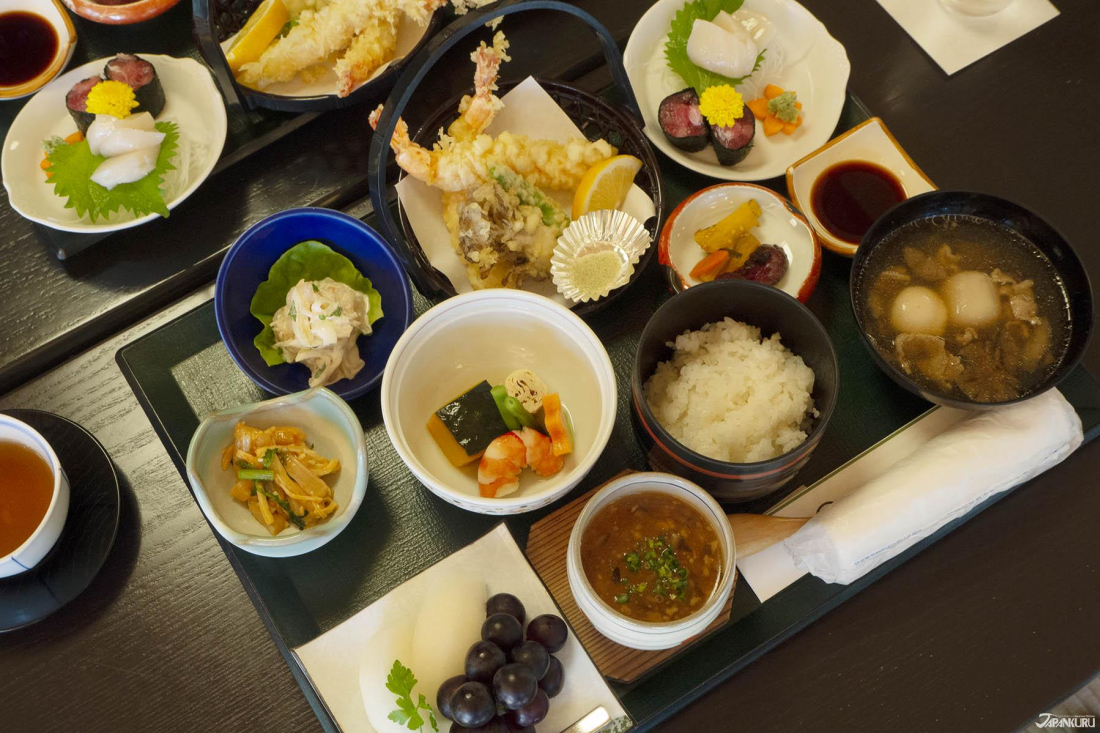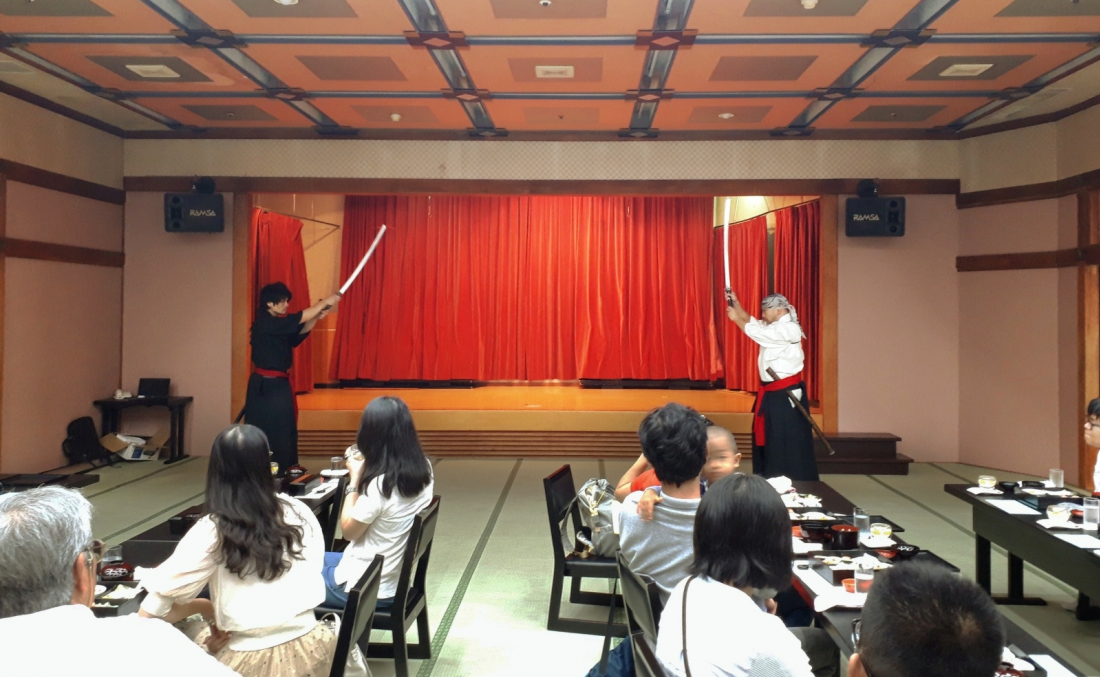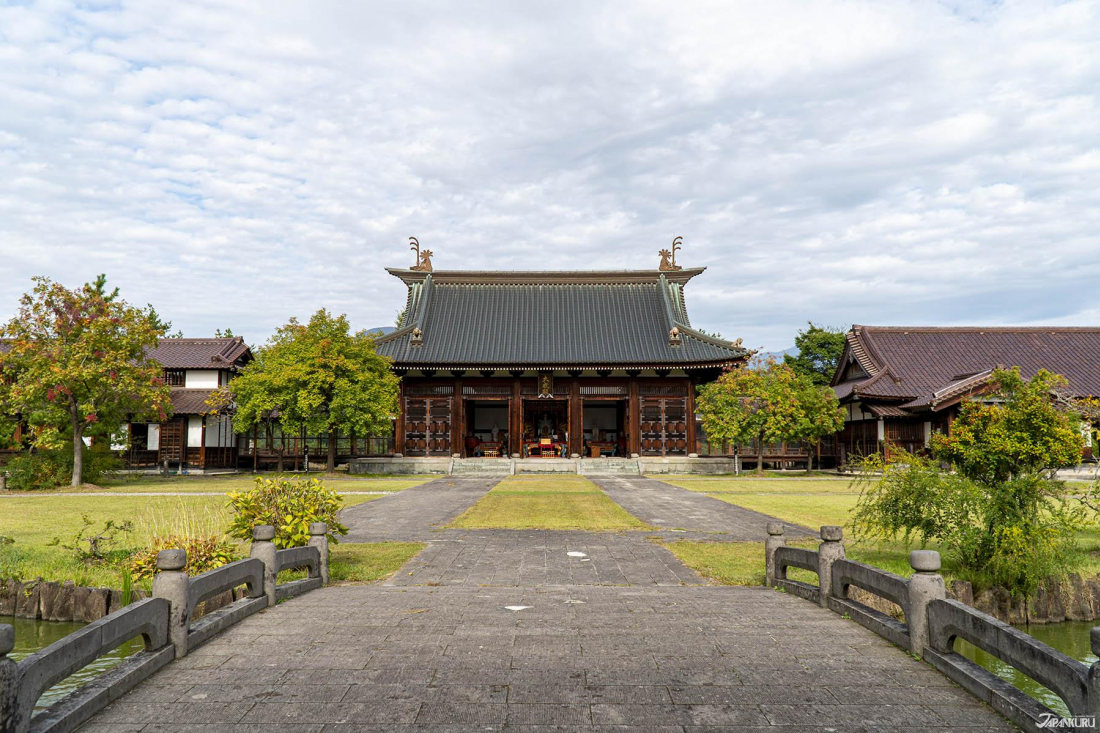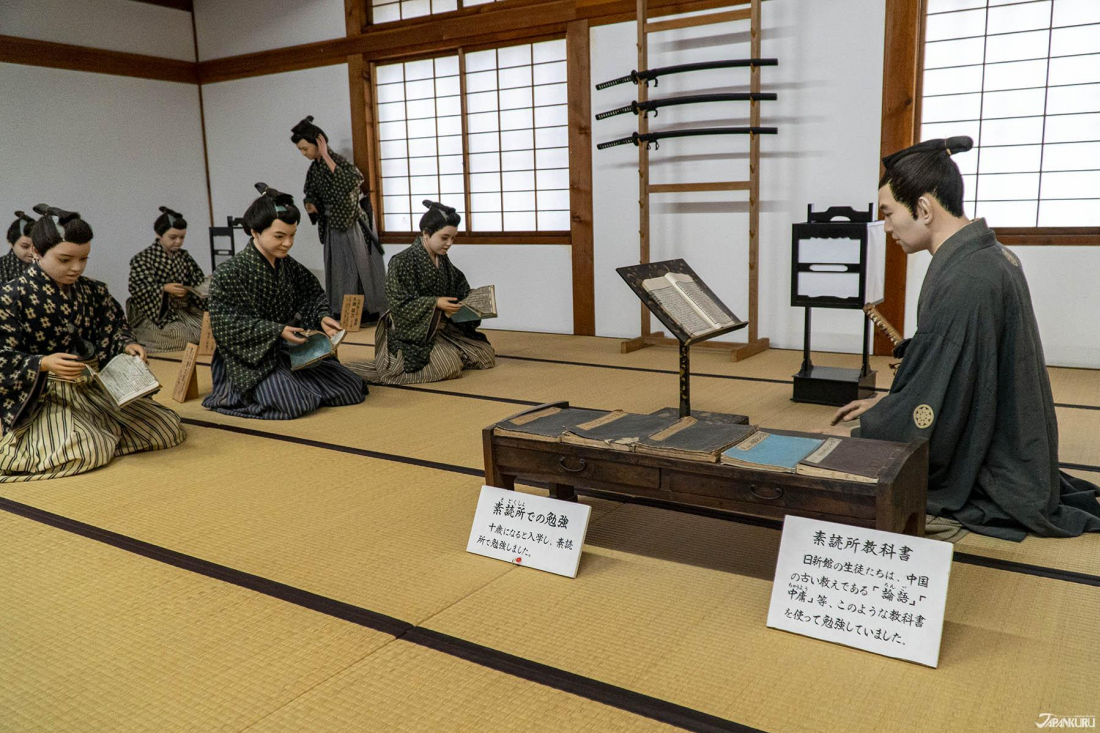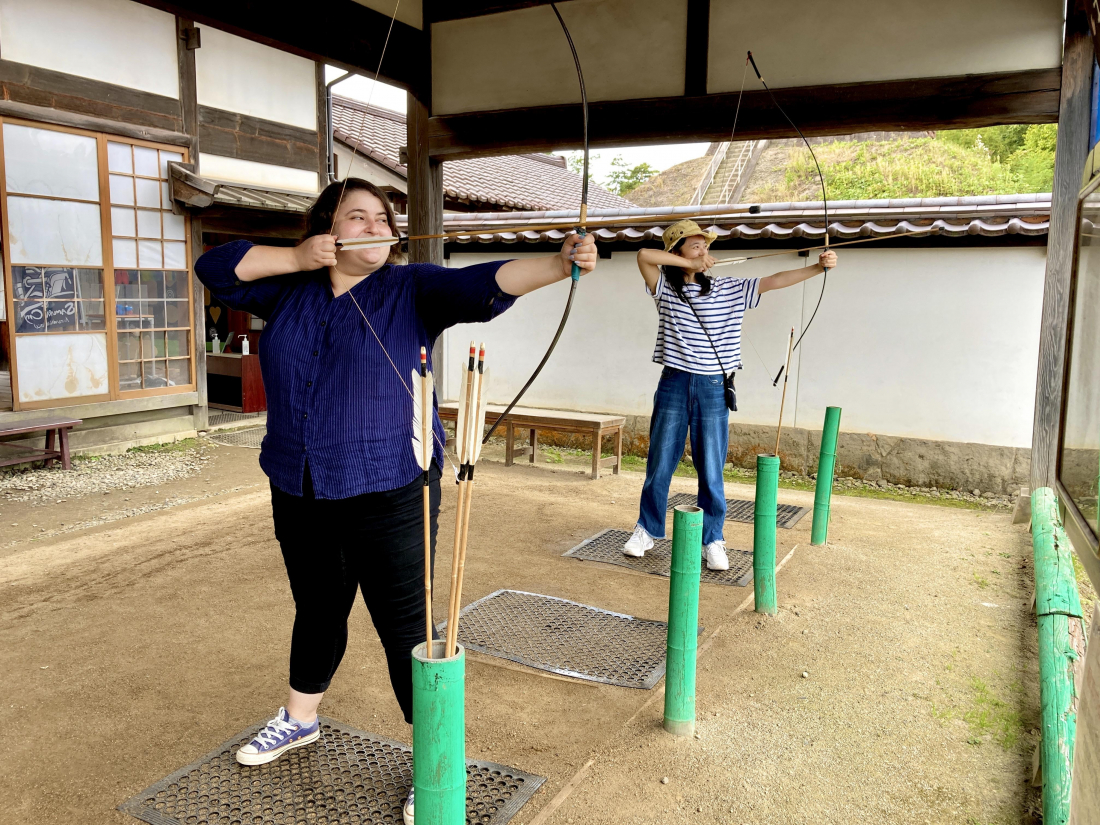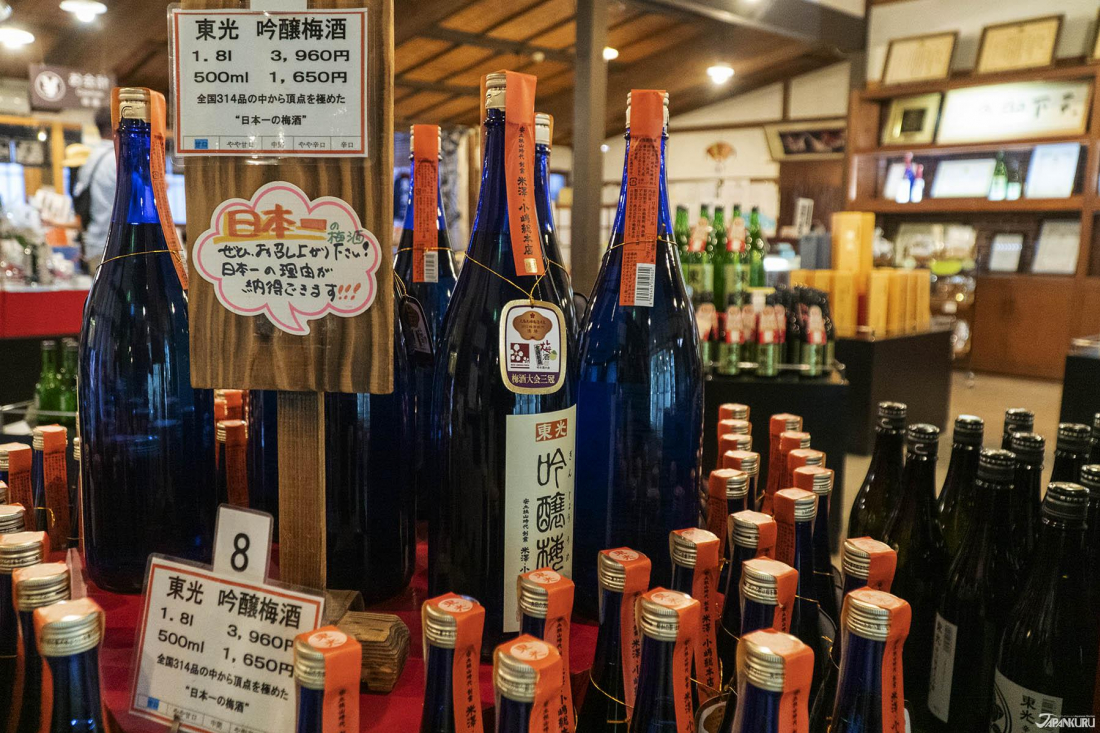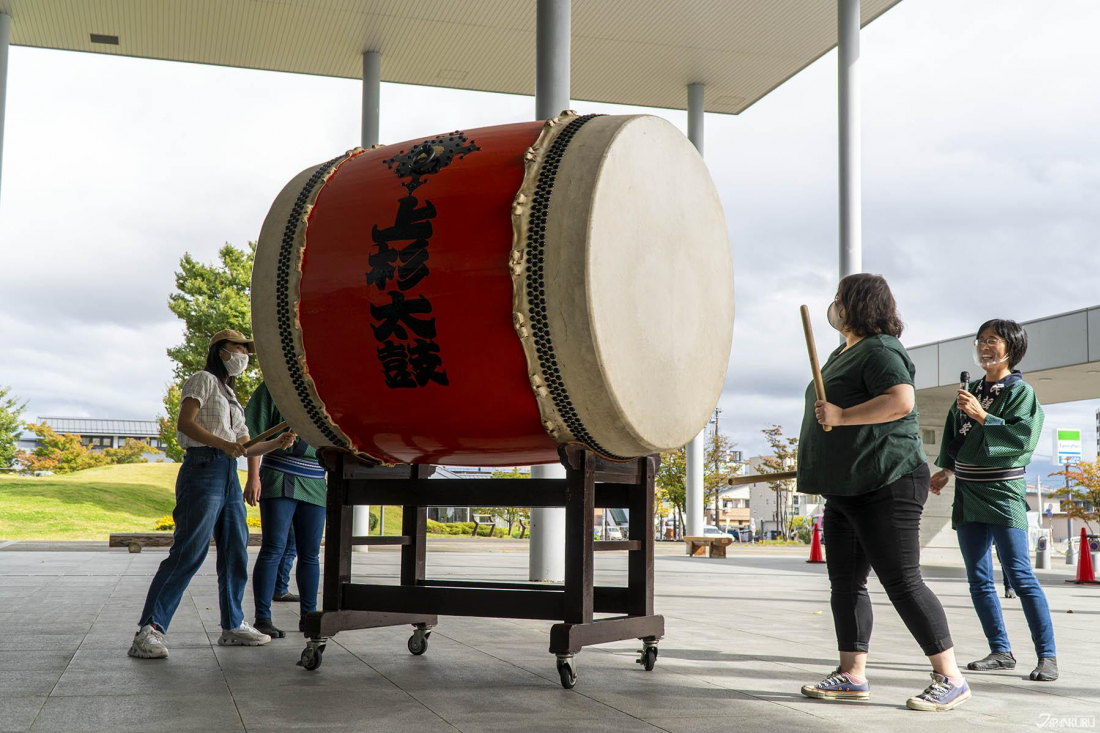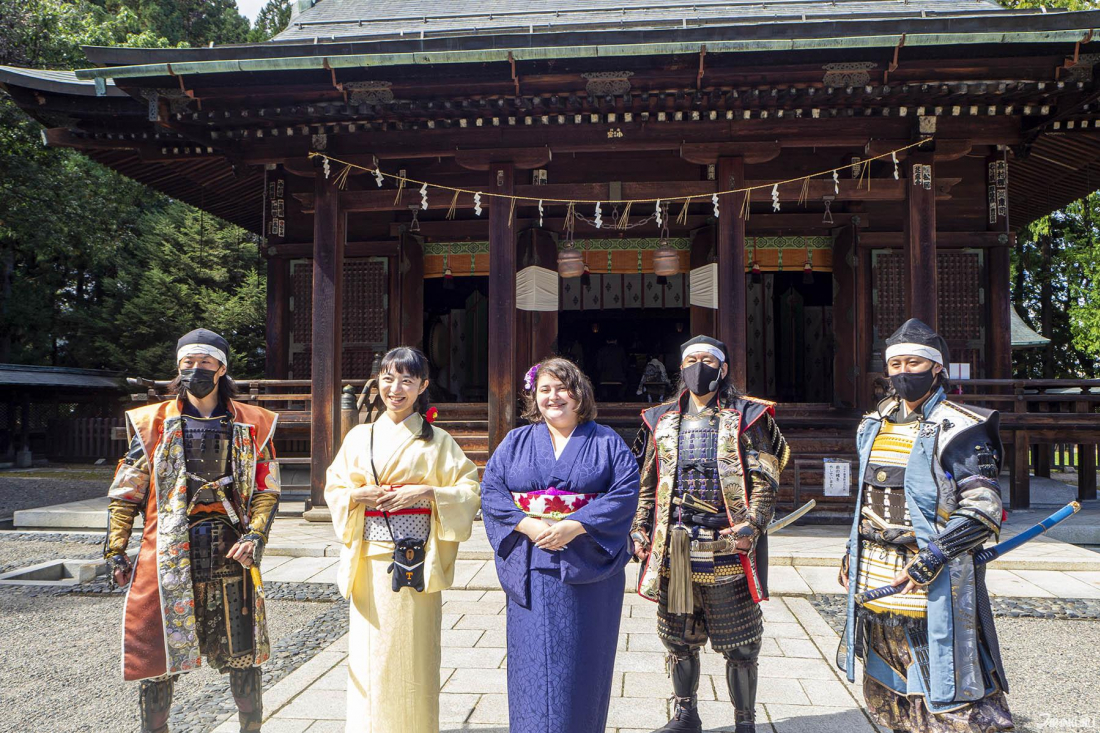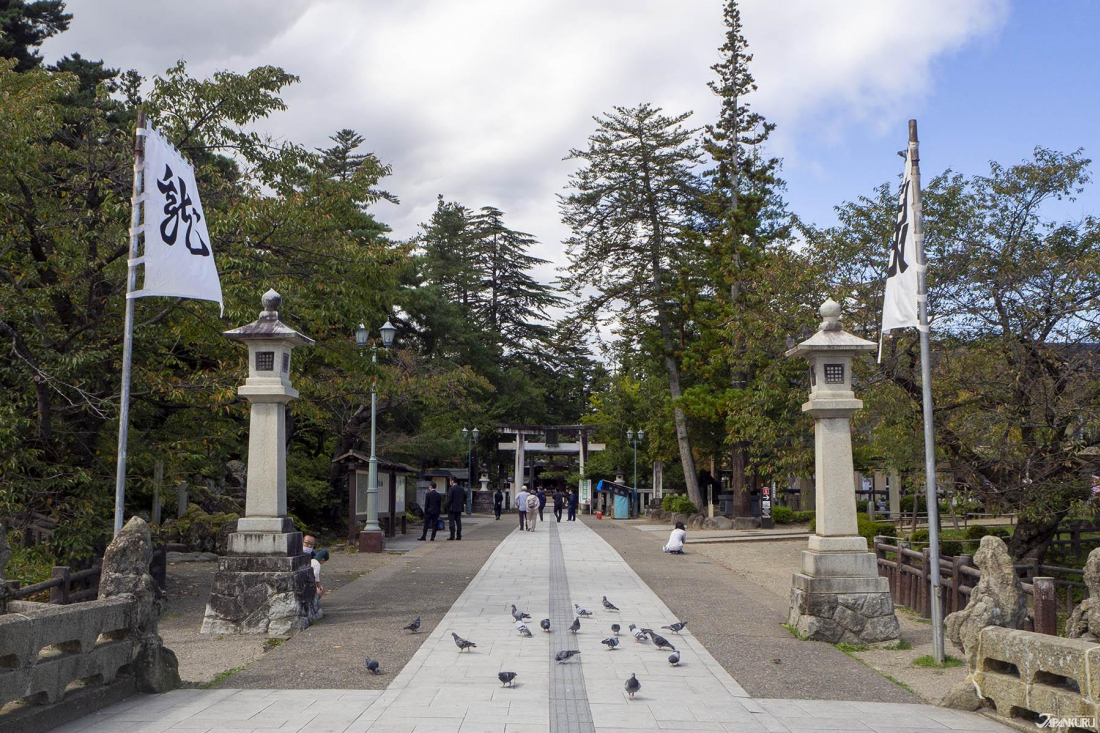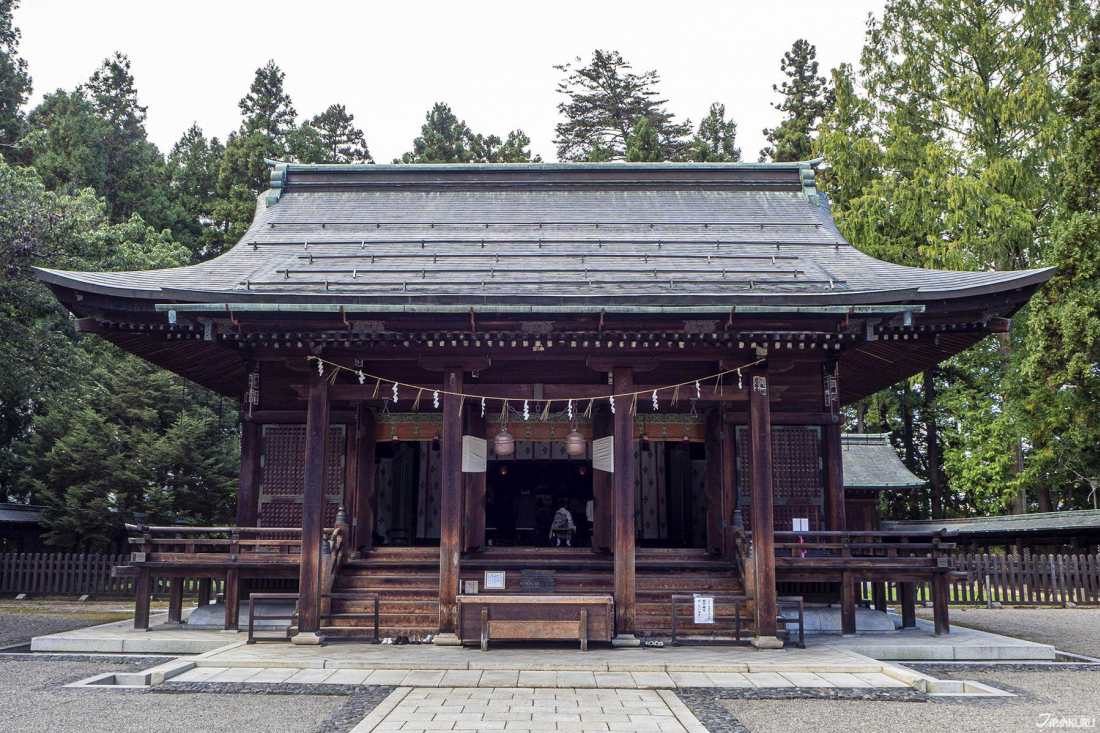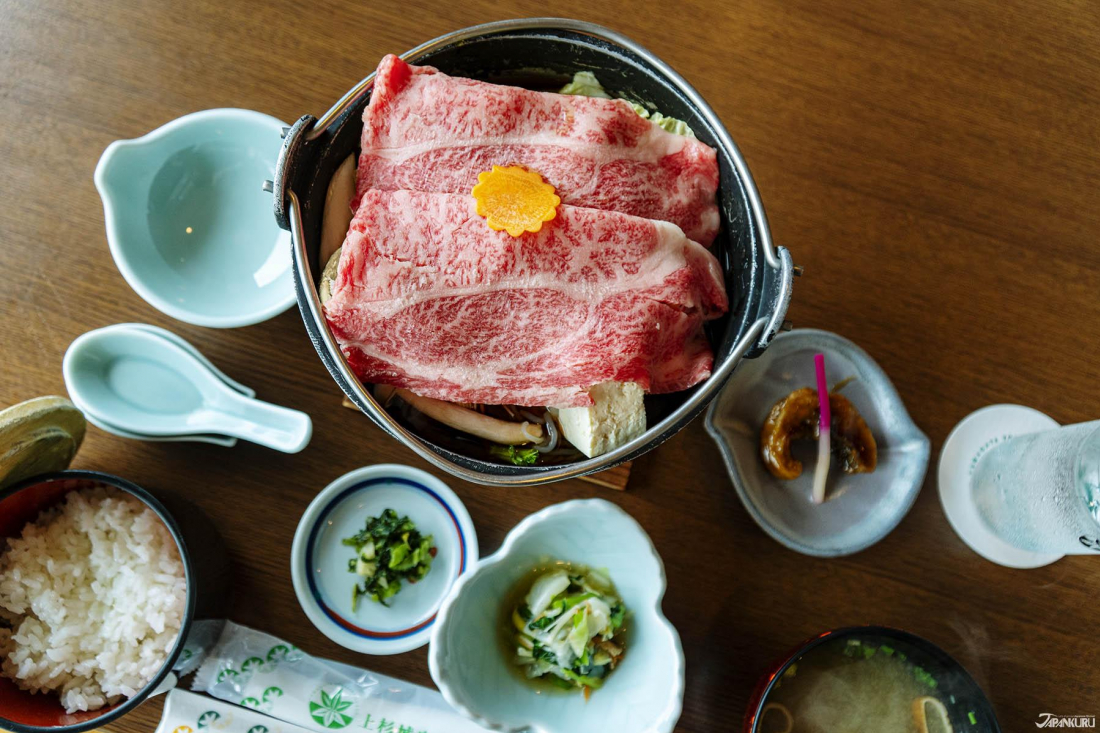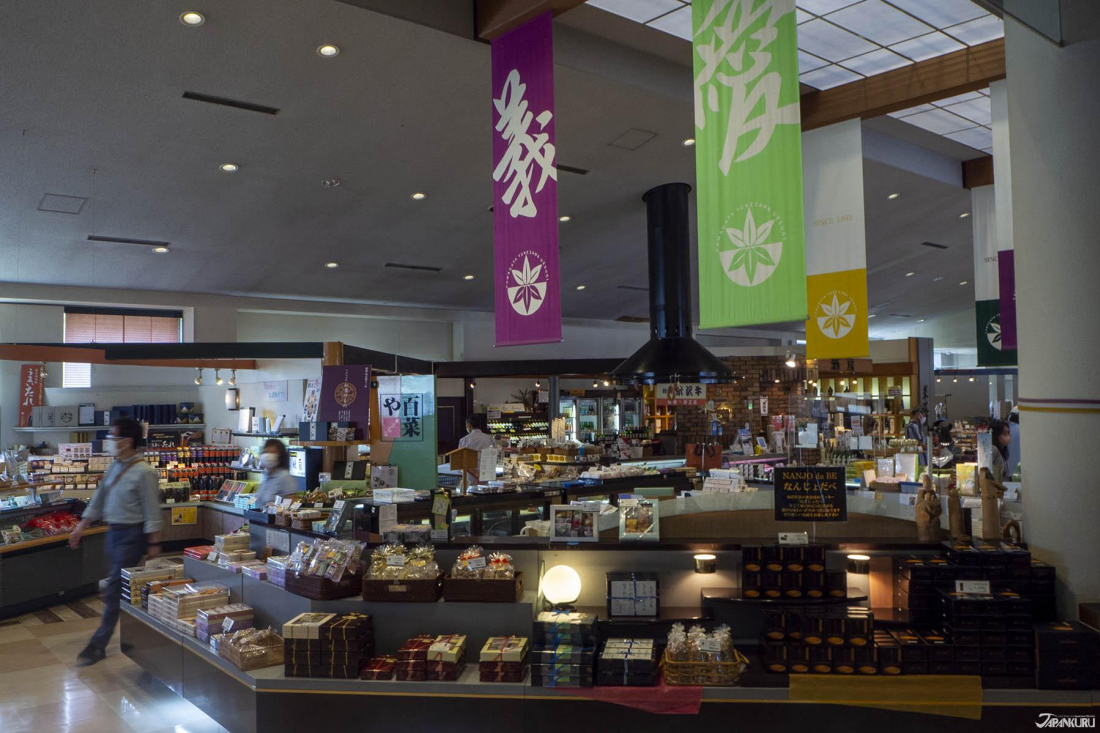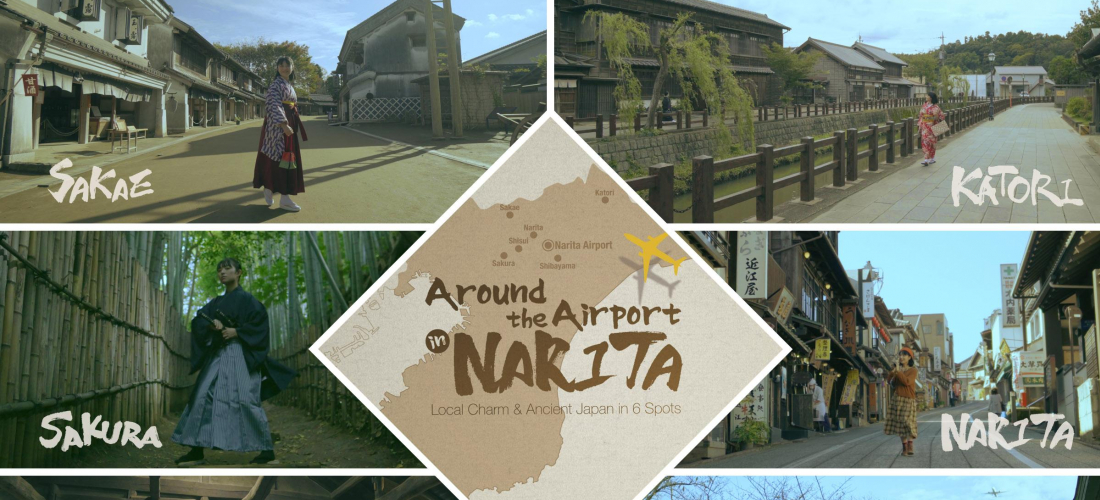
CONTENTS
Join the Japankuru team as we swing swords (and see the sights) like the samurai of old!
The Samurai Train
Early this fall, the Japankuru team set off on a trip to recreate the final glory days of samurai in Japan, following warriors from the history books on a route from Tokyo into the north, through Tochigi, Fukushima, and Yamagata Prefectures. In the last years of Japan's tumultuous Edo period, samurai clans fought one another for power, and for honor, and the rise and fall of those in charge led to intrigue, fallen samurai banished to the sticks, and a string of battles throughout Japan. On this trip, we traced the path of the Boshin War as it brought an end to the days when samurai ruled Japan, by walking the ancient roads the samurai once tread, visiting the castles they once protected, learning in the schools they once attended, and even meeting a few samurai transported to the modern-day, who carry on their own samurai traditions. This trip through Nikko, Aizu, and Yonezawa is the perfect path for Japanese history buffs, fans of samurai culture and Japanese sword-fighting, or anyone who loves to venture off the beaten path to see more of Japan ー so follow the Japankuru team as we hop on the Samurai Train and head back in time!
Day 1: From Asakusa to Nikko, Tochigi
In the late 1860s, international trade and cultural exchange took off around the world, and while the isolated islands of Japan were still largely closed off from most foreign visitors, the growing influence of the outside world was enough to reach even reclusive samurai society. Unhappy with the policies of the ruling Tokugawa shogunate, a handful of samurai clans from western Japan banded together in support of the Japanese emperor and decided to overthrow the shogun ー the beginning of Japan's Boshin War. This war spelled the end of Japan's golden age of samurai, the end of the Edo period, and the end of the Tokugawa clan's rule. Those who were once in power fled from the major cities of Kyoto and Tokyo (then called Edo), finding their way through modern-day Nikko, Aizu-Wakamatsu, and Yonezawa.
So on this trip, we followed the paths of those fleeing samurai and the battles that doggedly followed them as they went, beginning by making our own getaway out of Tokyo!
Meeting Kengishu Kamui on the Skytree Train
Our trip begins at Tobu Asakusa Station, not far from the site of an 1868 Boshin War battle that took place in what is now Ueno Park, and just steps away from Sensoji Temple, which was already ancient at the time of that battle (after being founded in the year 645)! Arranged by Tobu Top Tours*, this itinerary starts with a ride on the Tobu SkytreeTrain, which has huge picture windows and seats facing the windows for great views of Tokyo Skytree on the way out of town.
But as lovely as the Japanese countryside might be out the window, most passengers will definitely be more interested in what's going on inside the train! To make sure this trip is all about the samurai from the very start, the highlight of this train ride is a performance from "samurai artist" group Kengishu Kamui, led by Tetsuro Shimaguchi. Fans of Kill Bill might already recognize this name, as Tetsuro Shimaguchi is the "Samurai Artist" responsible for the stunning sword-fighting choreography that made the movie so incredibly popular. Shimaguchi directed Kill Bill's martial arts, and even made a cameo himself, and these days he shows off that same expressive mix of sword play and performance (which he has dubbed "kengido") in the shows he does with Kengishu Kamui, even right there in the aisle of the train.
*Tobu Top Tours may not be offering this exact itinerary in the future. If you're interested in taking a similar trip and would like them to arrange it, contact them and see what's available!
Arriving at Nikko Toshogu Shrine
After the thrilling onboard samurai performance comes to an end and the train pulls into Nikko station, it's time to head to this tour's first destination, a peaceful historic spot that came in contact with the fiery battles of the Boshin War, and found itself mercifully spared. Nikko Toshogu is a beautiful Shinto shrine that was constructed in 1617 as a resting place for Tokugawa Ieyasu ー the very first Tokugawa to rule Japan as shogun.
Nowadays Nikko Toshogu is incredibly popular among sightseers due to the ornate carvings that cover the various gates and shrine buildings, but during the Boshin War, a group of shogun-supporting holdouts fled to the shrine after suffering defeat in a battle in Utsunomiya, a little to the south. Famous Japanese military man and politician Itagaki Taisuke, who supported the new imperial government, arrived at the shrine knowing that he either had to force his enemies out of hiding, or burn down this historic site. We can all be thankful that Itagaki managed to find a way around this conundrum and convince the troops to leave the shrine without causing its destruction!
The fantastic carvings by famous artisan Hidari Jingoro are just one of the reasons that Nikko Toshogu is a UNESCO World Heritage Site, and some of these colorful decorations are iconic. The three wise monkeys (who see no evil, hear no evil, and speak no evil) are now known the world over, but they actually originated from this one carving at Nikko Toshogu, which depicts a troop of monkeys living by Confucianist codes of conduct! It's worth taking a moment to really appreciate the many little carved scenes, all over the shrine.
▶︎ More on Nikko Toshogu Shrine here!
Nikko Toshogu Shrine (日光東照宮)
2301 Sannai, Nikko, Tochigi
Official Website (jp)
A Kanaya Lunch and Samurai Guesthouse
After a busy morning at the shrine, we had our lunch just a quick bus trip away at the Cottage Inn Restaurant, run by Nikko's venerable Kanaya Hotel. Meals at the Cottage Inn include bread from Kanaya Hotel's popular bakery, which is light and fluffy as a cloud, and just one part of the hotel's long history of bringing western culture to the area ー along with a number of foreign guests.
Next door to the Cottage Inn Restaurant is the original Kanaya Hotel, which is now open to visitors as a historical museum. The Kanaya Hotel is still up and running in a grand old building just down the street from Nikko Toshogu Shrine, but the original guesthouse was founded in a smaller samurai home nearby. Some of Nikko's first foreign visitors were welcomed into this traditional Japanese building, which still has a number of surprising staircases, windows, and trap doors, all ready for the former samurai residents to make a quick exit. Who knew hotel history could be this interesting? It's definitely worth taking a quick tour of the house after lunch!
Kanaya Hotel History House + Cottage Inn Restaurant
1-25 Honcho, Nikko, Tochigi
Official Website (jp)
To Aizu: Traveling Back in Time at Ouchijuku
After eating, our time in Nikko came to an end, and we followed the flow of the Boshin War towards the Aizu area of Fukushima. But as we journeyed north, it only made sense to stop in at an Edo-era post town on the way! Back in the days of samurai, the people of Japan would travel between cities using a network of well-maintained roads, and it's no surprise that small towns sprouted up and prospered by catering to the travelers along these busy routes. Some of those old roadside towns have become modern cities, and some have disappeared, but a handful have been preserved in their old-fashioned state to this day, like the little village of Ouchijuku (pronounced oh-uchi-juku).
When waves of modernization spread through Japan in the 20th century, rural Ouchijuku was a little left behind, and throughout the years the residents continued to maintain their traditional old houses with heavy thatched roofs instead of rebuilding with modern techniques. Of course, that means that the small community still looks just like it did when samurai passed through the area to fight their enemies to the north, and walking down the main street feels like stepping back in time. Ouchijuku isn't a living history museum, though! The buildings are still privately owned and lived in as regular homes, and locals run guesthouses, small shops, and restaurants out front. Lots of travelers who visit Ouchijuku will grab a bite to eat at one of the shops selling the town's famous "negi-soba" (ネギそば, eaten with a huge leek instead of chopsticks), and we recommend snacking on some senbei (煎餅) rice crackers too!
▶︎ More on Ouchijuku and negi-soba here!
Ouchijuku (大内宿)
Ouchi, Shimogo, Minamiaizu District, Fukushima
Official Website (jp)
Dinner in Aizu
On our tour, we were left to our own devices for dinner, but since we were staying the night in Aizu that could only mean one thing ー sauce katsu-don! Katsu is a breaded, fried pork cutlet that makes it onto many lists of "must-try foods in Japan," and the tender cuts of meat are commonly eaten on top of a bowl of rice as "katsu-don," but in Aizu they take the dish to the next level by dunking the pork into a sweet-and-savory sauce right before serving! On this trip, we stopped in at Tonkatsu Banban for our sauce katsu-don, where they offer a version using a sauce made with egoma, sometimes called wild sesame, an extra-local specialty!
Tonkatsu Banban (とんかつ 番番)
2-1-32 Higashisengoku, Aizuwakamatsu, Fukushima
Tabelog Page
Day 2: Seeing Aizu Through Samurai Eyes
At the center of the Aizu region, the city of Aizu-Wakamatsu is a castle city with a strong connection to the Matsudaira samurai clan and others before it, and that samurai history has left its mark on everything from the city skyline to the stories locals tell. During the Boshin War, the Matsudaira clan's political position put the city on the defense when the pro-imperial forces came north to cement the new regime's power, and to this day any Aizu native can tell you about the wartime tragedies that still scar the city. The tale of the Byakkotai has particularly stuck around ー a group of young samurai soldiers still in their teens, who mistakenly thought that they saw the castle being burnt to the ground while awaiting orders on a nearby hillside, and feeling that all was lost, attempted seppuku (ritual suicide) en masse. But in spite of this sad shared history, the people of Aizu are particularly friendly and ready to share traditions, making it a great place to learn more about Japan!
Oyakuen Garden & Teahouses for the Feudal Lord
Our morning in Aizu began with a trip to Oyakuen, a garden and summer home designed just for the daimyo, the Aizu domain's feudal lord. Landscaped during the samurai era for the relaxation of the most powerful man around, this traditional Japanese garden offers a leisurely path around a picturesque pond, at the center of which is a small island with a tiny teahouse. When the daimyo still ruled over Aizu, it's said that he held secret meetings inside the teahouse, which was only easily accessible by boat at the time. Nowadays, visitors can freely roam around the secluded garden (and onto the teahouse island) like they own the place, and spend the morning as a lord or lady.
One unusual aspect of the Oyakuen gardens lies on the other side of a row of hedges, next to the pondside path. The name "Oyakuen" (お薬園) actually means "medicinal garden," and a whole half of the garden space is devoted to rows and rows of medicinal plants, added to the garden in the 17th century, about 200 years after its original construction. To this day, Oyakuen's gardeners grow a wide variety of plants used in Japanese "kampo" (漢方), inspired by traditional Chinese medicine, and for centuries these plants were really used by the citizens of Aizu to treat aches, pains, and whatever else they could manage. The juxtaposition of a practical medicinal garden right beside a luxurious lordly leisure garden makes Oyakuen equally beautiful and fascinating!
▶︎ More on Oyakuen Garden here!
Oyakuen Garden (御薬園)
8-1 Hanaharumachi, Aizuwakamatsu, Fukushima
Oyakuen Official Page (jp) / Oyakuen Official Facebook (jp)
Tsurugajo Castle
At the heart of the city of Aizu-Wakamatsu, and the old Aizu Domain, is the castle that was once the center of the local samurai's defenses, called Aizu-Wakamatsu Castle or Tsurugajo. The castle's history goes back to 1384, when the Ashina clan first built a castle in Aizu, and when the fortress was rebuilt as a "modern castle" in 1592 (complete with an unusually tall tower) the flashy new facilities were given the name Tsurugajo Castle. Unfortunately, while the young Byakkotai troops were indeed wrong about the castle being burnt to the ground during its 19th-century siege, the samurai of that time had a surprising amount of firepower, and their artillery left the structure unstable and unsafe. The castle tower was demolished a few years after the Boshin War, leaving just the old stone walls, before a reconstruction was finally later built to restore the city's beloved castle!
Inside Tsuruga Castle today is a museum that details local samurai history, through the many generations of famous rulers who took over the Aizu Domain, all the battles they won and lost, and everything that happened afterward as well. There are life-size models of castle life and beautiful reconstructions of the iconic samurai helmets worn by historic local leaders, and even a reasonable amount of English signage that leads you through history as you slowly make your way up quite a few flights of stairs, to the rooftop lookout with a great view of the area!
Our Japankuru team recommendation is to stop at the little snack shop outside the castle before you leave, to try tempura manju, a local Aizu specialty. These little brown sugar red bean cakes are battered and fried like tempura, then topped with a dash of soy sauce, for a surprisingly delicious salty-sweet flavor combination!
▶︎ More on Tsurugajo Castle here!
Tsurugajo Castle (鶴ヶ城)
1-1 Otemachi, Aizuwakamatsu, Fukushima
Official Website (jp)
Lunch and a Show at Mangerou
After walking the halls once tread by Aizu's many samurai, it was time to eat like a king at Mangerou, a restaurant that has been serving traditional Japanese food in a classic Japanese garden for almost a century. The spacious restaurant is divided into a number of private dining rooms with tatami mat floors and wooden beams overhead, along with broad windows along the walls, which look out onto different landscapes from the gardens outside. Eating at Mangerou really does feel a little like having a meal in a palace.
Our lunch at Mangerou fit perfectly with the surroundings, with a selection of elegant Japanese dishes on each tray. Fresh local ingredients and even some regional Aizu recipes were featured in our meal, which included everything from slices of sashimi and vegetable tempura, to Fukushima's own "imoni" stew (芋煮).
On this tour through Aizu, though, there's more to lunch than just a delicious meal. Following us from the Samurai Train, samurai artist group Kengishu Kamui returns once again at Mangerou, for an even bigger and better performance, flying across the tatami mats with swords in hand! Sometimes, after watching Tetsuro Shimaguchi and his crew show off their samurai skills, the audience even gets to join in on the fun!
Mangerou (萬花楼)
10-6 Higashisakaemachi, Aizuwakamatsu, Fukushima
Official Website (jp)
Archery Lessons and Samurai School at Nisshinkan
For those who couldn't get enough of Kengishu Kamui's samurai sword fighting, this trip's next stop is the perfect place to learn more about how samurai would really fight ー and how to learn those skills, too. Nisshinkan was once a samurai school attached to Tsurugajo Castle, and it's where young boys would learn everything it took to become an honorable samurai. (You didn't think those skills came naturally, did you!?)
Nisshinkan was founded in 1803, when the chief retainer of Aizu's fifth Matsudaira clan daimyo recommended emphasizing education as the best way forward. This samurai school was soon considered the very best out of the hundreds of similar educational institutions all over Japan, in terms of size and quality of education, and for us modern-day visitors it was hard not to be a little envious of the beautiful school buildings and some of the subjects that students once studied. Interesting reconstructions and displays show that based on strict Confucian codes of conduct, the curriculum at Nisshinkan started with a foundation of samurai etiquette and social rules, but also included everything from calligraphy to astronomy, horseback riding (including in the water of "Japan's oldest swimming pool"), and martial arts like sword fighting or archery.
The school unfortunately stopped accepting new pupils when the original buildings were burnt down ー during the Boshin War, in fact. But visitors can still get a little bit of the Nisshinkan experience when they visit the sprawling samurai school campus. On the way in, an enormous sign spells out the basic principles set out for all young samurai-in-training to follow, called the Ju no Okite (什の掟):
1. You must do what your seniors tell you to do.
2. You must bow to your seniors.
3. You must not tell lies.
4. You must not behave in a cowardly manner.
5. You must not bully those weaker than yourself.
6. You must not eat outside.
7. You must not talk with women outside.
And finally: You must not do what you must not do (ならぬことはならぬものです).
Fortunately for us, those rules aren't enforced anymore, so we were allowed to "study" at the school even though we just ate lunch off-campus! On our tour, the Japankuru team tried Nisshinkan's archery workshop, where we were quickly set up with wooden bows and a handful of arrows to aim at bullseyes set up on the other side of the target practice grounds. Please don't ask us how many times we hit the target, we're a little ashamed of our aim. Let's just say we had a great time working on our samurai skills!
Nisshinkan (日新館)
10 Takatsukayama, Kawahigashimachi Minamikoya, Aizuwakamatsu, Fukushima
Official Website (jp)
To Yonezawa: Learning the Iado Way at the Toko Sake Museum
After studying hard and trying our best to polish our not-so-great archery technique, it was time for an hour or so on the bus, heading even further north for a relaxing evening in Yonezawa. Our last big stop for the day was the Toko Sake Museum, built in the restored traditional sake brewery where venerable Yonezawa sake makers Kojima Sohonten long produced their famous Toko brand sake. Yonezawa's cold winter temperatures and mountain spring water set the city up for great sake brewing, and Kojima Sohonten has been making their sake in this area for over 400 years (and 23 generations), after being established in the year 1597. Back then, the sake was produced for consumption by the local ruling samurai, the Uesugi clan, and even when a rice shortage threatened the region in the Edo period, Kojima Sohonten was allowed to keep using the precious grains to produce their beloved sake.
Nowadays, visitors can tour the old facility to see relics from the past four centuries of Yonezawa sake making, including ceramic vessels that Japanese brewers used in the process long ago, the enormous wooden barrels utilized in more recent centuries, and even a brewery reception area arranged just like it was back in the Meiji period (1868-1912), complete with old account books and a vintage telephone. Of course, visitors aged 20 and over can also sample a few famous Toko Sake brews, to find the perfect bottle to bring home from the gift shop. Their limited-edition museum-only sake is a popular choice, but their sweet plum wine (called umeshu/梅酒) has won a number of awards!
▶ More Japanese brewery tours here!
Toko Sake Museum (酒造資料館 東光の酒蔵)
2-3-22 Omachi, Yonezawa, Yamagata
Official Website (en)
Before leaving the Toko Sake Museum, on this trip we were treated to a special samurai demonstration all about Iaido, a style of Japanese sword fighting developed 450 years ago by Hayashizaki Jinsuke Shigenobu. While on a mission to avenge his ambushed and murdered father, this young samurai developed his own sword fighting techniques, all about awareness and the ability to respond quickly to attack, plus an accompanying pacifist philosophy that warriors should only attack first to prevent others from killing. In the end, Hayashizaki Jinsuke Shigenobu did find his father's killer and take his revenge, but he also left behind a legacy of beautiful martial arts technique, demonstrated during this tour by the experienced Abe-sensei. The performance ended with "tameshi-giri" (試し斬り), the act of testing a sword's strength and sharpness, which was once performed on humans, but is now done on wet, rolled tatami mats instead!
A Toko Brewery Breakfast
While browsing the Toko Sake Museum gift shop, members of the Japankuru team were particularly intrigued by the freezer filled with cute pouches of amazake (甘酒), a sweet, mostly non-alcoholic fermented rice drink. Kojima Sohonten makes a series of amazake drinks, some of which are mixed with fruit for a smoothie-like experience, so we grabbed a couple of them to enjoy with breakfast the next morning, after letting them defrost in the fridge overnight. If you've never tried amazake, the unique flavor makes these pouches a fun sweet treat!
Day 3: Joining the Samurai of Yonezawa
Yamagata Prefecture's Yonezawa was once a castle town crawling with samurai, much like Aizu-Wakamatsu, but you won't find any big, bold castles still standing in this city. The Yonezawa domain was ruled by the Uesugi clan ー the same samurai receiving top-class sake from the brewers at Kojima Sohonten ー and when the Boshin War began, the Uesugi clan found itself siding with Aizu and other northern domains, facing off against the pro-imperial forces. In the end, the other side won, and Yonezawa's little castle was sadly demolished shortly after, but the bright side is that Yonezawa still holds on strongly to its cultural traditions and samurai history, even to this day!
Samurai Bands and Japanese Drums at Denkoku-no-Mori
The last day of our samurai-themed trip was all about Yonezawa, and we spent it just about entirely on the grounds where Yonezawa Castle once stood. Constructed on a patch of land just outside the old castle moat, our first stop was Denkoku no Mori, a facility dedicated to cultural performances and a historical Uesugi Museum. On this trip, we were treated to a set of special performances on the patio area out front, starting with Japanese drum specialists Uesugi Daiko. This unique family band has been performing since the year 1948, and now involves three generations, who come together to play all kinds of Japanese music, from pieces strummed out on the shamisen, to folk songs using traditional vocal techniques, and of course performances on taiko drums of all shapes and sizes. Once the family gets started beating out a rhythm on the drums, the beat reverberates through your body, and it's just about impossible to look away!
After they finish playing, Uesugi Daiko lets audience members try their own hand on the biggest drum they have, an enormous taiko drum that towers overhead. When asked about drumming technique for the enormous drum, they'll tell you not to worry about it, "just imagine someone you're mad at and go at it!"
The second performance of the morning was by the Yamagata Ai no Bushotai, who took us back in time to long before even the Boshin War. This group of professional samurai reenactors brings the Sengoku period to life, an era also called the Warring States period, which lasted from 1467 to about 1615. Joining us in the shade outside Denkoku no Mori were three famed military figures, Suibara Chikanori (born 1616), Naoe Kanetsugu (born 1560), and Uesugi Kagekatsu (born 1556), who showed off their fantastic suits of armor as they fought each other to the death in dramatic sword-waving duels, telling stories of real feuds and battles that took place in the final years of the Sengoku period.
After the main show came to an end, audience members were again invited to join in, this time holding swords and winning our own dramatic sword fights against the reenactors, as they fell to the ground "in defeat." Even when the whole thing is entirely faked, we highly recommend (pretend) sword-fighting, especially when you know from the start that you'll be winning ー it's extremely satisfying to achieve such a dramatic victory!
Denkoku no Mori (伝國の杜)
1-2-1 Marunouchi, Yonezawa, Yamagata
Official Website (en)
*Outside of these tour performances, both Uesugi Daiko and Yamagata Ai no Bushotai have varying schedules. Check their respective websites/social media to see what they're up to!
Uesugi Daiko: Official Website (jp)
Yamagata Ai no Bushotai: Official Website (jp) / Twitter
A Kimono-Clad Trip to Uesugi Shrine
Even though the members of the Yamagata Ai no Bushotai had been so shockingly defeated at the hands of their own audience, we hadn't seen the last of them! Next on our itinerary, we headed next door to the cafe and kimono rental shop Nagomitei for some quick, skillful help getting changed into kimono, before heading out for a lovely stroll on the old castle grounds together with our trio of samurai chaperones.
Nagomitei (和庭)
1-3-60 Marunouchi, Yonezawa, Yamagata
Official Website (jp)
Our destination was Uesugi Shrine, a Shinto shrine on the old Yonezawa Castle grounds dedicated to Uesugi Kenshin, who was famed for his military prowess and his skilled leadership, and who was also the adopted father of our own Uesugi Kagekatsu. The path into the shrine is marked with a pair of battle flags used by Kenshin during his famous fighting years, one of which symbolizes Bishamonten, a Buddhist figure that the leader strongly believed in, and the other of which reads "dragon," which was used to signal the enemy’s position when Kenshin planned to rush in and attack.
The main hall of the shrine is small and elegantly crafted, but the nearby Keishoden (treasure hall) holds the real helmet of our other samurai companion, Kanetsugu Naoe, which is worth a look if you have the time. The samurai helmet is adorned with an enormous metal decoration that spells out one word: LOVE (愛).
Uesugi Shrine (上杉神社)
1-4-13 Marunouchi, Yonezawa, Yamagata
Official Website (jp)
A Lunch of Yonezawa Beef at Abcys
After the Japankuru team bade our farewells to our samurai friends from the Yamagata Ai no Bushotai, and got back into our regular clothes, we headed to a last lunch that had a lot more to do with local Yonezawa specialties than samurai history. Yonezawa is perhaps even better known for its unique cuisine than its samurai-filled past, and local recipes make use of high-end ingredients and some rather unusual items as well.
Stopping into a building with a little collection of shops and restaurants called Uesugi Joshien, next to the old Yonezawa Castle grounds, we had a rather decadent lunch at Abcys, where the star of the show was a hotpot made with delicately thin, tender slices of Yonezawa beef. Yonezawa is known for its high-quality beef, a famous brand of wagyu that is sometimes considered on par with Kobe beef! One other Yonezawa delicacy made it onto the menu, too, and that was koi fish, which is rarely eaten in Japan outside of this area. Together, these dishes made up a uniquely Yonezawa-style meal.
Abcys (アビシス)
1-1-22 Marunouchi, Yonezawa, Yamagata
Official Website (jp)
If you're hoping for some great souvenirs, the shopping area in Uesugi Joshien is the best place to grab them before the end of this trip! Local recommendations include a wide variety of snacks and foods, from packaged koi meat to flavorful konyaku balls, and a whole selection of drinks made with Yamagata's famously delicious fruit. For those looking for a nice gift to bring home from Yonezawa, there's a little something for every palate!
Uesugi Joshien (上杉城史苑)
1-1-22 Marunouchi, Yonezawa, Yamagata
Official Website (jp)
Coming to the End of the Tour
Before we knew it, Japankuru's whirlwind tour of three cities and endless samurai tales had come to an end. Traveling from Tokyo through Nikko, Aizu, and all the way north to Yonezawa, this trip made us feel as if we'd seen a new side of samurai history. Not only did this our route follow dramatic military campaigns and era-changing battles, but it also took us to the schools where samurai grew from children to great warriors, led us along garden paths where the daimyo relaxed on warm summer days (or told secrets to his most loyal vassals), and brought us to old castle grounds, of course, where samurai once tread on tranquil days of peace and busy battle days alike. Tokyo has plenty of history and beauty, but when it comes to seeing the places where these samurai stories took place, there's no replacement for a path following the conflicts that spelled the end of the Edo era, and venturing north to meet the samurai on their way.
As mentioned above, this time the Japankuru team went on a tour conveniently set up for us by travel agent Tobu Top Tours. The company may or may not be offering the same itinerary in the future, but if you'd like to arrange something similar, you can contact Tobu Top Tours and ask.
For more info and updates from Japan, check Japankuru for new articles, and don't forget to follow us on Twitter, Instagram, and Facebook!
Details
NAME:Samurai Train Tour
- TOUR
- FUKUSHIMA
- TOHOKU
- YAMAGATA
- activity
- aizu
- aizuwakamatsu
- amazake
- archery
- beef
- bread
- brewery
- castle
- culture
- denkokunomori
- edoera
- edoperiod
- fukushima
- garden
- history
- kampo
- kanayahotel
- katsu
- katsudon
- manju
- nihonshu
- nikko
- nikkotoshogu
- nisshinkan
- ouchijuku
- oyakuen
- performance
- sake
- samurai
- school
- shrine
- taiken
- taiko
- tempura
- tochigi
- toshogu
- train
- traintrip
- tsurugajo
- uesugishrine
- wagyu
- yamagata
- yonezawa
- yonezawabeef
PROFILE
Follow us @Japankuru on Facebook, Instagram, and Twitter!
COMMENT
FEATURED MEDIA
VIEW MORE
・Accommodations for Odaiba Sightseers: Mitsui Garden Hotel Toyosu PREMIER ・住宿推薦 三井花園飯店 豐洲普米爾 ・오다이바 관광 맞춤 숙소: 미츠이 가든 호텔 토요스 프리미어 ・ค้างคืนที่ Mitsui Garden Hotel Toyosu Premier โรงแรมสำหรับผู้มาเยือน Odaiba #japankuru #odaiba #tokyo #tokyotrip #japantrip #japantravel #mitsuigardenhotel #mitsuigardenhoteltoyosupremier #tokyohotel #odaibahotel #toyosu #tokyoview #tokyobay #rainbowbridge #미츠이가든호텔토요스프리미어 #오다이바 #오다이바맛집 #오다이바건담 #오다이바해변공원 #오다이바야경 #오다이바온천

Nagano Prefecture is famous for delicious soba noodles, and in the city of Ueda, you can learn from the experts! Local aunties run this cooking class, teaching you everything you need to know to make your own delicious plate of soba noodles entirely from scratch. #japankuru #soba #sobanoodles #japanesefood #travelexperience #japan #japantrip #ueda #nagano #japaneseculture #japanexperience #daytrip #daytour #cookingclass #japanesecookingclass #上田市 #そば作り #소바체험 #우에다시 #나가노여행 #일본소바

Kuramae Shrine is known for its early-blooming cherry blossoms and its gorgeous golden mimosa blooms, making it a great sakura spot for travelers arriving in Tokyo a little early for the main cherry blossom season. It’s also tucked away in a neighborhood packed with trendy cafes and coffee shops. Kuramae is a lovely place to spend the day. 🌸☕️ ・ #japankuru #kuramaeshrine #kuramae #tokyo #tokyotrip #cherryblossom #cherryblossoms #mimosa #tokyocherry #花見 #蔵前神社 #ミモザ #桜 #東京 #Japan #日本 #일본 #Japon #ญี่ปุ่น #Japão #Japón #япония #japantravel #日本旅行 #日本旅遊 #일본여행 #japan_of_insta #japantrip #traveljapan

Local Japanese Favorites at the Okinawa Don Quijote ② Ohta’s Isan, the digestive aid of the Japanese people ・ ・ 2024唐吉訶德不可不知的好物推薦② 日本國民消化小幫手:太田胃散 ・ ・ 오키나와 돈키호테 숨은 꿀템2. 일본 국민 소화제! 오타이산 #japankuru #okinawa #donki #沖縄 #오키나와 #오키나와여행 #오키나와돈키호테 #일본쇼핑리스트 #오타이산 #일본소화제 #太田胃酸 #ohtasisan

Happy Valentine's Day from the Japankuru team! May your day be full of sweet chocolates and sweet nothings. 💕 Or, if you're like a rising number of women in Japan, take the opportunity to treat yourself! 🍫💝💆 • Find out more at Japankuru.com! (Link in bio.) • #japankuru #valentinesday #valentineschocolate #japanesechocolate #japaneseculture #バレンタイン #バレンタインチョコ #メリーチョコレート #Japan #日本 #일본 #Japon #ญี่ปุ่น #Japão #япония #japantravel #日本旅行 #日本旅遊 #일본여행 #japan_of_insta #japantrip #traveljapan #japan🇯🇵 #japanlife #igerstokyo #explorejapan #japanfocus #enjoyjapan #japantravelphoto

Japankuru Coupon: BEAMS fashion, accessories, lifestyle goods, and more! BEAMS 5% Discount Coupon ▶︎ Validity Dates: February 1 ~ February 29, 2024 ▶︎ Discount: 5% off all products in-store ▶︎ Usable At: BEAMS stores throughout Japan (all stores except BEAMS JAPAN Izumo and BEAMS JAPAN Nikko) ▶︎ Details: Please present this coupon page before payment to receive your discount! This coupon is also valid in combination with tax-free discounts/refunds for foreign tourists. (Tax-free shopping is only available at some BEAMS locations.) Some products may not be eligible for discount. ・ ・ ・ BEAMS - JAPANKURU優惠折扣券 BEAMS 2024年2月限定特別優惠券 店內全部商品95折 ▶︎使用期間:2024/2/1到2024/2/29 ▶︎使用範圍:日本全國店舖 ▶︎使用方法:結帳時請務必事先向店員出示本優惠券,若未出示本優惠券恕無法享有本優惠。本優惠券可搭配免稅優惠一併使用,但不排除特定門市無法使用本優惠券。此外,不排除特定商品不適用本優惠券。 ・ ・ ・ 「빔즈(BEAMS) x 재팬쿠루(JAPANKURU)」스페셜 할인 쿠폰 빔즈(BEAMS) 5% 할인 쿠폰 ▶유효기간: 2024년 2월 1일 ~ 2월 29일(한 달 동안) ▶︎할인율: 매장 내 전 상품 “5% 할인" ▶︎해당 매장: 일본 전국 빔즈 (BEAMS) 매장 (BEAMS JAPAN이즈모、BEAMS JAPAN닛코는 쿠폰 할인 대상 제외 점포입니다) ▶︎상세 내용: 결제 전 본 쿠폰 페이지를 제시하면 정가대비 5% 할인된 금액에 구매하실 수 있습니다! 본 쿠폰은 외국인 관광객들을 대상으로 하고 있으므로 면세 혜택(빔즈 일부 매장)과 별도로 추가 할인이 가능합니다. (일부 매장 및 제품은 대상에서 제외될 수 있습니다.) #japankuru #beams #beamsjapan #beamsginza #coupon #재팬쿠루 #빔즈재팬 #빔즈 #일본여행 #일본쇼핑 #일본쇼핑리스트 #銀座 #東京 #tokyoshopping #japankurucoupon

